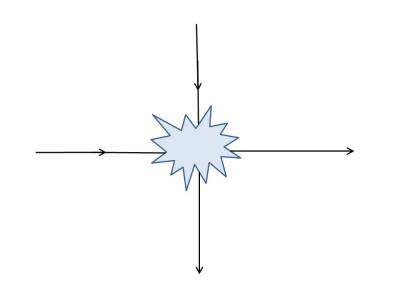WARNING: Spoilers abound!
Do not read further if you haven’t seen the wonderful, awesome The Lego Movie!
There are two kinds of good movies. The first kind is a movie you enjoy while watching; you appreciate the acting, the writing, the set design. You come out of the theater thinking, that was good. I’d recommend that. In the past six months, I’ve seen many of these so-called Good Movies of the 1st Kind. Examples include The Dallas Buyer’s Club, Rush, Captain Phillips, the second Hobbit movie, and the second Hunger Games movie. I liked them all.
But then there is a Good Movie of the 2nd Kind—a movie which leaves you jacked up on adrenaline, with a big goofy smile on your face, and ideas buzzing around the inside of your head. A movie where you come out of the theater thinking, when am I going to go see that again? I need to see that again. What just happened?
Don’t get me wrong; a GM2ndK is not necessarily a happy, fun movie. Saving Private Ryan was for me a GM2ndK; for weeks I could not get the first half hour (Omaha Beach) out of my head. Schindler’s List was also a GM2ndK. So was A Clockwork Orange, and Magnolia, and Paths of Glory.
So, too, The Lego Movie.
Unless you’ve seen the movie, you won’t believe it. You won’t have the context, the conceptual framework, the raw materials from which to grasp the idea: that The Lego Movie is as profound and philosophical as any movie you’ve (probably) ever seen.
Oh sure, the movie is beautiful to look at. The animation is unique and charmingly quantized and pixilated. The pace is frenetic, action packed. The worlds depicted are stunning, goofy and marvelous. The jokes are non-stop: I laughed out loud two or three times a minute for 100 straight minutes.
So, I liked the movie. But this post wasn’t meant to be a movie review.
My broader point is that the movie resonated with me, personally, philosophically, because it so closely matches my own world view.
SPOILERS! PROCEED NO FURTHER, YE WHO HAVEN’T WATCHED!
The message of the movie is that there are two (seemingly) diametrically opposed ways of playing with Legos. In the first camp are the conformists, who follow instructions to the letter, never have an original thought, and prefer a world of rigidity and order. The head conformist is Lord Business, who wants to spray Krazy Glue on every Lego in the universe so that nothing ever changes.
To me, Lord Business represents the Abrahamic God, the God of the Old Testament. The God of one single, rigid construction, exactly the way He designed it. Don’t go against God’s plan (or the plan of Lord Business). There is only one way the world (or worlds) can be, and if you oppose that plan—if you don’t follow the instructions—then you have committed heresy. You will be melted. There’s no place for you in such a conformist world.
The other way of playing with Legos is the way children play with them: with unbridled imagination. Sure, you can buy a Millennium Falcon Lego set and construct it as the instructions describe. But you can ignore the instructions, too, and your play is just as valid. Want to put Batman on the Millennium Falcon? Sure; go for it. Want to have Superman and Gandalf team up to battle a robot pirate? Why not? If you can imagine it, then you can do it, just as long as some adult doesn’t come down and spray the pieces with glue.
That’s what organized religion does: it sprays us with glue.
To me the world of organized religion is limiting, stifling. The idea that there’s an omnipotent being that controls every aspect of everything is not comforting to me; it is horrifying. Theologians mumble about free will and wave their hands reassuringly, but what good is free will if you’re still constricted by God’s plan? If God has everything worked out, then you’re stuck to the world with Krazy Glue; your life is supposed to be lived in a single way and you’ll never be able to ignore the instructions. You’ll never get to ride Unikitty into Middle Zealand and have tea with the Green Lantern. Sorry, but you’re an average, run-of-the-mill Lego piece and that’s all you’ll ever be.
But imagine: suppose that there are an infinite number of universes, each with its own parameters, its own structure. In such a multiverse, anything you can imagine is true. There are still rules (each universe obeys its own laws of physics, just as Legos cannot escape their own block-like, quantized nature) but beyond those rules, anything goes. And imagine there is no Lord Business that commands you to think in a certain way. Imagine if you had the freedom to do as you will.
Here’s a table, to make the metaphor(s) more explicit:
| In the movie… | …is a metaphor for |
| A Lego person | a human |
| The Lego world you’re in | the universe you’re in |
| All of the possible Lego Worlds | the multiverse |
| Quantized nature of Lego blocks | the laws of physics |
| Krazy Glue | God’s plan |
| Lord Builder (the Father) | a rigid conformist deity |
| The Child | the deity that any of us could be, using imagination |
| Instructions | Rigid moral codes |
| “Everything is awesome” | “Everything is awesome” |
We are indeed trapped in the universe that we find ourselves in (we can’t get away from our quantized nature, alas) but we can at least imagine the other worlds, and dream, and find inspiration from them. We can live our lives the way we like. This isn’t anarchy; it’s freedom. This world view doesn’t preclude morality; we shouldn’t put our hands into other people’s Lego Worlds, and mess the pieces up, and break their Lego constructions. But we should be able to look at other people’s constructions, and value them, even love them. If you want to have Batman marry Han Solo, and have them ride off into the Old West sunset (riding on Unikitty, no doubt) then I shouldn’t judge. There is no Lord Business. There is only what you can build, and what I can build, and what you can imagine, and what I can imagine. We should not judge each other but embrace each other’s constructions. Everyone’s trapped by the laws of physics, but no one’s trapped in their own minds; there are no laws that can ever force our imaginations to conform.
If God exists, then he’s a child, and wants us to play in all the worlds, and be free. He wouldn’t even own a tube of Krazy Glue.













